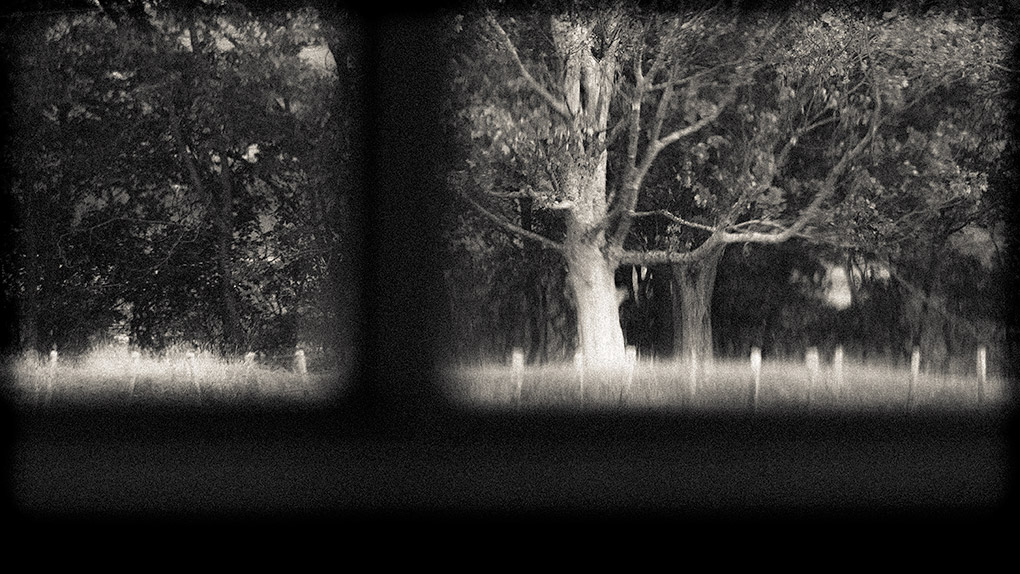South of my place, the terrace drops via a steep, rough paddock to Te Awaoteatua stream. On the far side another hillside, even steeper in places and with extensive stands of kanuka, rises to the ridge you see here. Beyond the ridge, No. 3 Line follows the valley of Tokeawa stream. Birds live in this sky.
I thought briefly about cloning out the magpies — after all, they're almost indistinguishable from specks of dirt, aren't they? But they were there at that moment, and the reason I pressed the shutter at that moment was because they were there — I have several similar photographs from moments just before. That something so apparently insignificant can change a photograph to such an extent, ... well, it fascinates me. Those two tiny specks fix a precise moment; none of the preceding photographs (which are almost identical otherwise, save for slight differences in framing) can be pinpointed in time as precisely.
Moreover, arguments about whether to talk about photographs (or other artworks) will probably rage for as long as anyone's around to photograph or view the photographs, but I lean towards the view that if you
need to say something extra (and that includes the title), the photograph (or other artwork) has mostly failed — the photograph should say everything that needs to be said. (I said I
lean towards that view; I'm not confident enough to claim it as a belief.)
But what if the title and the accompanying words, not just the photograph alone, are part of the artwork?
(Apologies for the white on black text. When I set up this blog I didn't intend writing more than simple captions.)
[5 July 2013, Panasonic Lumix GH1, 100–300 mm at 234 mm, ISO 200, 1/500 at f8]
All content © 2013 Pete McGregor






















































